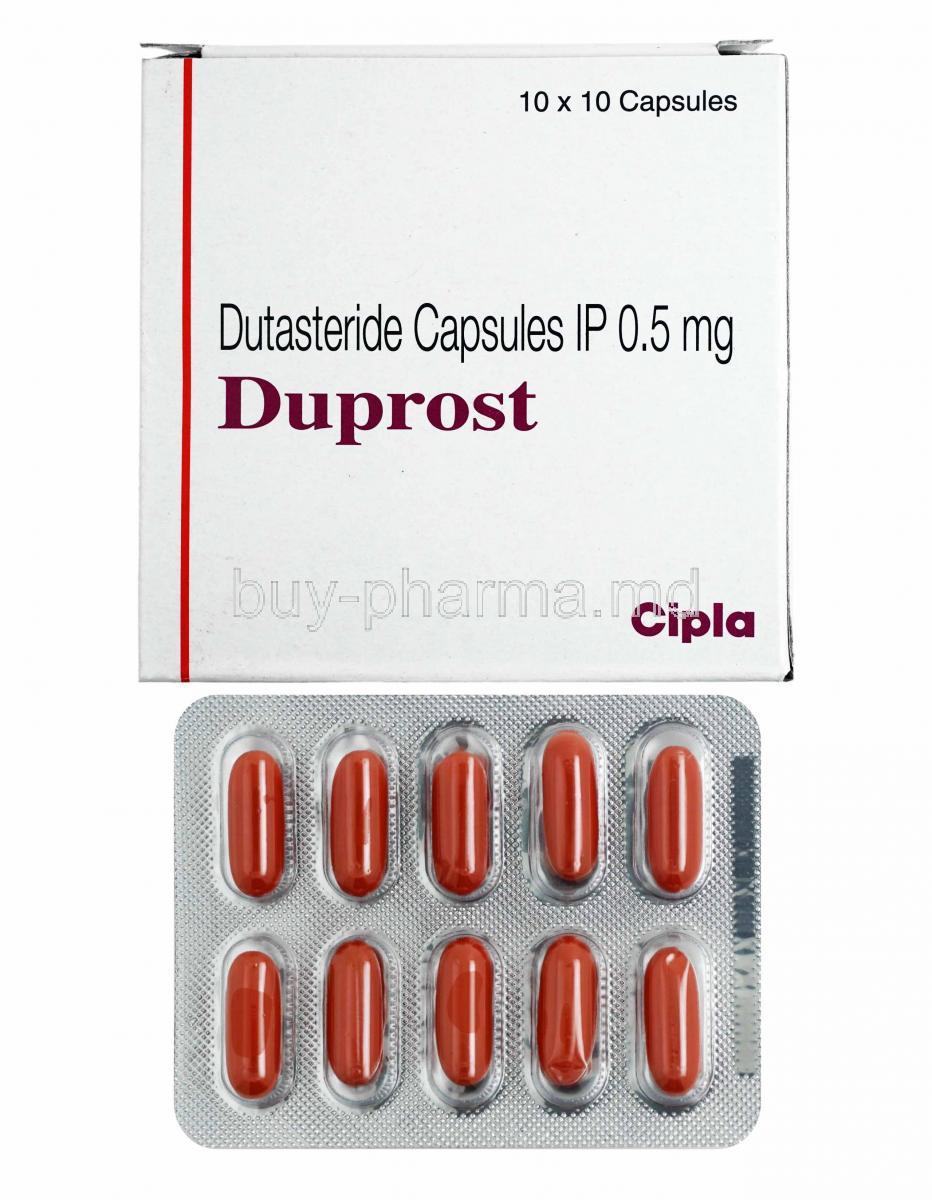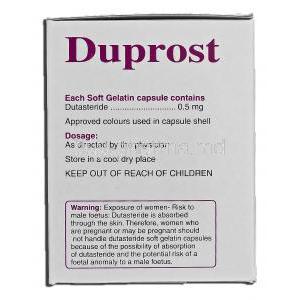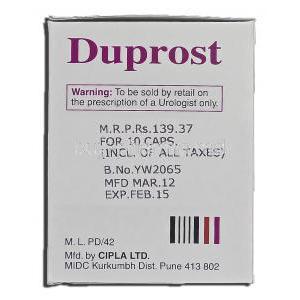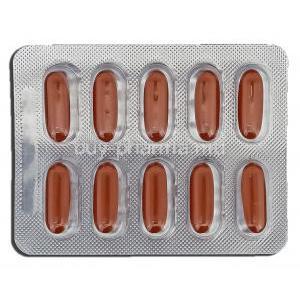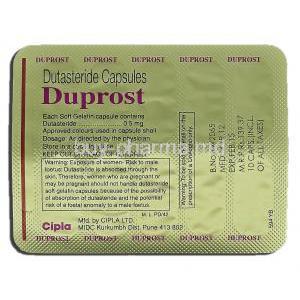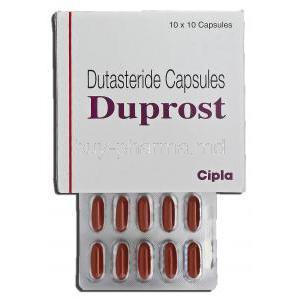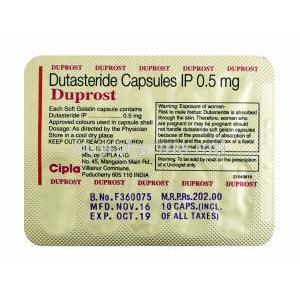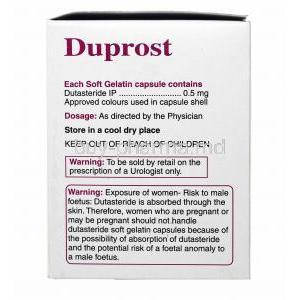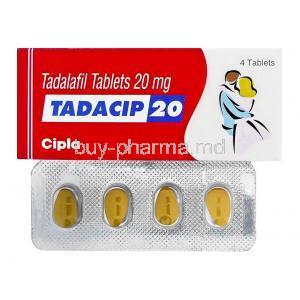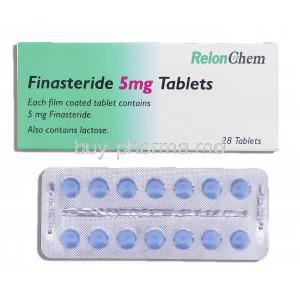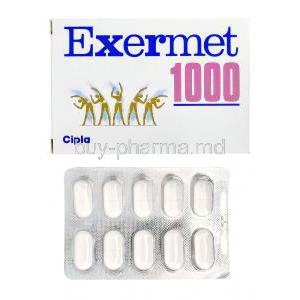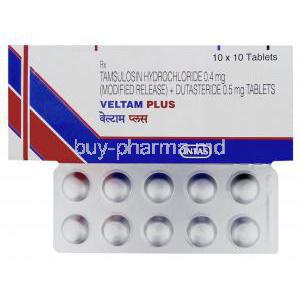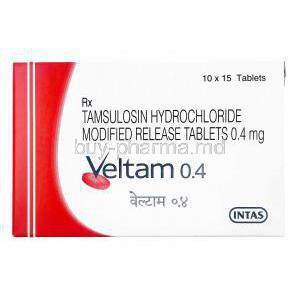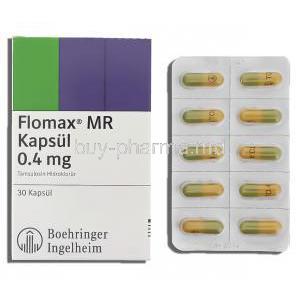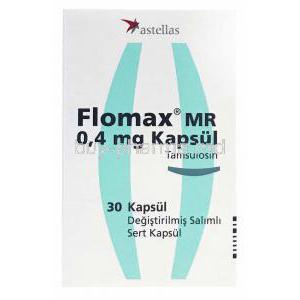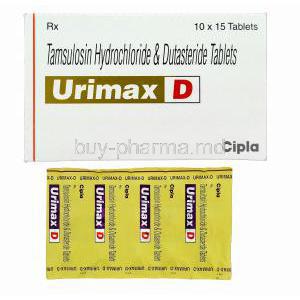Introduction to Duprost (Dutasteride)
Overview of Duprost as a Medication
Duprost, containing the active substance dutasteride, is a therapeutic agent designed to modulate hormonal activity in men. It is primarily utilized for conditions associated with prostate enlargement. By targeting hormonal pathways, Duprost aids in alleviating urinary symptoms and improving quality of life in patients with benign prostatic conditions.
History and Development of Dutasteride
Dutasteride emerged in the late 20th century as an advanced alternative to earlier prostate medications. Developed through rigorous pharmacological research, it demonstrated superior efficacy in reducing dihydrotestosterone (DHT) levels. Its introduction marked a significant milestone in the management of prostate disorders.
Therapeutic Class: 5-Alpha Reductase Inhibitor
Dutasteride belongs to the class of 5-alpha reductase inhibitors. These agents suppress the enzymatic conversion of testosterone into DHT, the androgen primarily responsible for prostate enlargement. This pharmacological action places it alongside similar agents such as finasteride, though dutasteride offers broader enzyme inhibition.
Comparison with Other Prostate Health Medications
Compared with alpha-blockers, which work by relaxing smooth muscle in the urinary tract, Duprost targets the underlying hormonal cause of prostate growth. Finasteride, another reductase inhibitor, blocks only type II enzymes, whereas dutasteride blocks both type I and type II, leading to a more profound reduction in DHT levels.
Composition and Formulation
Active Ingredient: Dutasteride
The primary active component of Duprost is dutasteride, a potent inhibitor of 5-alpha reductase enzymes.
Available Strengths and Dosage Forms
Duprost is commonly available in 0.5 mg soft gelatin capsules, designed for oral administration. This standardized dosage ensures consistent therapeutic outcomes.
Inactive Ingredients and Excipients
Formulations typically contain inactive components such as gelatin, glycerin, titanium dioxide, and other excipients that stabilize the capsule and enhance absorption.
Brand vs. Generic Availability
Duprost is a branded form of dutasteride. Generic versions are also widely available, providing cost-effective alternatives while maintaining equivalent efficacy and safety standards.
Mechanism of Action: How Duprost Works
Role of 5-Alpha Reductase Enzyme in Prostate Enlargement
Prostate growth is closely linked to the enzyme 5-alpha reductase. This enzyme catalyzes the conversion of circulating testosterone into DHT, which is significantly more potent in promoting prostate tissue proliferation.
Conversion of Testosterone to Dihydrotestosterone (DHT)
DHT binds to androgen receptors within the prostate, stimulating cellular activity that leads to gland enlargement. Elevated DHT levels are a central factor in the pathogenesis of benign prostatic hyperplasia.
Dutasteride’s Dual Inhibition of Type I and Type II 5-Alpha Reductase
Unlike finasteride, which selectively inhibits type II, dutasteride blocks both isoforms of 5-alpha reductase. This dual action achieves over 90% reduction in circulating DHT, ensuring a robust decrease in prostate size and hormonal stimulation.
Effect on Prostate Volume, Urinary Symptoms, and Hormone Balance
By lowering DHT concentrations, Duprost reduces prostate volume, alleviates urinary obstruction, and restores a healthier hormonal balance. Patients frequently experience improved urine flow, reduced nocturia, and diminished urgency.
Approved Medical Uses of Duprost
Benign Prostatic Hyperplasia (BPH) Treatment
Duprost is officially indicated for the management of BPH, a condition characterized by noncancerous enlargement of the prostate gland.
Symptom Relief in Urinary Flow Obstruction
By reducing gland size, Duprost improves urinary flow rates and decreases the sensation of incomplete bladder emptying.
Prevention of Acute Urinary Retention
Regular use of dutasteride lowers the risk of acute urinary retention, a painful condition requiring catheterization or emergency intervention.
Reduction of the Need for Prostate Surgery
Long-term therapy decreases the likelihood of surgical procedures such as transurethral resection of the prostate (TURP), offering a non-invasive alternative for patients.
Off-Label and Investigational Uses
Use in Androgenetic Alopecia (Male Pattern Baldness)
Although not universally approved for this indication, dutasteride is sometimes prescribed off-label for male pattern hair loss, demonstrating effectiveness in reducing hair follicle miniaturization.
Potential Role in Prostate Cancer Risk Reduction
Some clinical trials suggest that dutasteride may lower the risk of developing low-grade prostate cancer. However, its influence on higher-grade cancers remains controversial.
Hormone Therapy Support in Transgender Women
Dutasteride has been employed as an adjunctive therapy to suppress androgen activity, contributing to feminization in transgender women under supervised hormone replacement regimens.
Investigational Uses in Hirsutism and Dermatological Conditions
Research continues into its possible benefits in treating hirsutism, acne, and other dermatological conditions influenced by excessive androgen activity.
Dosage and Administration Guidelines
Standard Dosage for BPH
The usual recommended dose is one 0.5 mg capsule taken orally once daily. Consistent administration is vital for sustained therapeutic benefit.
Recommended Duration of Therapy for Symptom Improvement
Noticeable improvements may take several months. Most patients report significant relief after 3 to 6 months of continued therapy.
Instructions for Missed Doses
If a dose is missed, it should be taken as soon as remembered. If it is close to the next scheduled dose, the missed dose should be skipped. Double dosing is not recommended.
Route of Administration and Daily Timing Considerations
Duprost is administered orally and can be taken with or without food. For best results, it should be taken at the same time each day.
Side Effects of Duprost
Common Side Effects
- Decreased libido, often transient and reversible
- Erectile dysfunction, particularly during early treatment
- Ejaculation disorders, including reduced semen volume
- Breast tenderness and enlargement (gynecomastia)
Serious and Rare Adverse Effects
- Allergic reactions, manifested by rash, pruritus, or facial swelling
- Depression, mood instability, or reduced motivation
- Concerns regarding the development of high-grade prostate cancer
- Potential long-term hormonal alterations with chronic use
Drug Interactions with Duprost
Interactions with CYP3A4 Inhibitors and Inducers
Drugs such as ketoconazole, ritonavir, and other potent CYP3A4 inhibitors may elevate dutasteride plasma concentrations, increasing the risk of adverse reactions.
Effects of Combining with Alpha-Blockers (e.g., Tamsulosin)
Combination therapy with alpha-blockers can enhance symptom relief but may also increase the likelihood of adverse cardiovascular effects such as hypotension.
Interaction with Blood Pressure and Cardiovascular Drugs
Careful monitoring is recommended when used alongside antihypertensive agents, as additive effects may lead to symptomatic hypotension.
Alcohol and Lifestyle Considerations
While no direct interaction with alcohol has been documented, excessive alcohol consumption may exacerbate sexual dysfunction, a common side effect of therapy.
Warnings and Important Precautions
Need for Regular Prostate-Specific Antigen (PSA) Monitoring
Men undergoing therapy with dutasteride require consistent monitoring of PSA levels. This biomarker is essential for early detection of prostate abnormalities, yet dutasteride lowers PSA concentrations by approximately 50%, necessitating adjusted interpretation by healthcare providers.
Possible Masking of Prostate Cancer Symptoms
Because dutasteride suppresses DHT-driven prostate growth, it may obscure the early warning signs of prostate cancer. This masking effect could delay diagnosis, reinforcing the importance of regular digital rectal examinations and careful clinical evaluation.
Long-Term Safety Considerations
Prolonged use of dutasteride is generally well tolerated, but long-term hormonal suppression raises concerns about subtle metabolic effects. Continuous surveillance for cardiovascular risk factors, endocrine imbalance, and mental health status is prudent.
Blood Donation Restrictions During and After Therapy
Men taking dutasteride are advised to avoid donating blood during treatment and for at least six months after discontinuation. This restriction prevents accidental administration to pregnant women, where exposure could cause harm to the developing fetus.
Contraindications
Known Hypersensitivity to Dutasteride or Excipients
Any patient with a history of allergic reaction to dutasteride or capsule components must not use this medication. Manifestations may include rash, pruritus, or angioedema.
Contraindicated in Women and Children
Dutasteride offers no therapeutic benefit for women or children. Exposure carries risks without any clinical justification, making its use in these populations strictly contraindicated.
Pregnancy Exposure Risks (Teratogenicity)
Contact with dutasteride by pregnant women can interfere with normal development of male genitalia in a fetus. Even handling of leaking capsules is considered hazardous for women of childbearing potential.
Patients with Severe Liver Disease
Since dutasteride is extensively metabolized in the liver, patients with severe hepatic impairment face increased risk of drug accumulation and toxicity. Such patients should not be prescribed this medication.
Careful Administration and Monitoring
Patients with Hepatic Impairment
In cases of mild to moderate liver dysfunction, dutasteride must be administered with vigilance. Regular monitoring of liver enzymes and dose reassessment may be required.
Patients with Comorbid Cardiovascular Conditions
Although not directly cardiotoxic, dutasteride may indirectly influence cardiovascular health through hormonal modulation. Patients with pre-existing heart disease should be monitored closely for hemodynamic changes.
Monitoring in Long-Term Therapy
Extended therapy warrants periodic reassessment of efficacy and side effect profile. Routine laboratory work and urological examinations help ensure therapeutic safety.
Considerations in Polypharmacy
Men taking multiple medications, particularly CYP3A4 substrates, inhibitors, or inducers, should be managed carefully to avoid undesirable pharmacokinetic interactions. Comprehensive medication reviews are recommended.
Administration in Special Populations
Elderly Patients
Dutasteride is commonly prescribed in older men. Clinical studies confirm its efficacy and tolerability in this group.
- No standard dose adjustments are required solely based on age.
- Periodic monitoring ensures early detection of rare adverse effects.
Pregnant Women and Nursing Mothers
Dutasteride poses significant teratogenic risk if pregnant women are exposed. Nursing mothers should avoid any contact with the medication, as excretion into breast milk is unknown but potentially harmful.
- Women of childbearing potential must avoid handling leaking capsules.
- Strict contraindication applies during pregnancy and lactation.
Pediatric and Adolescent Use
Dutasteride is not approved for children or adolescents. The lack of clinical safety data and the potential for endocrine disruption exclude its use in this population.
- No therapeutic indications for pediatric patients.
- Accidental ingestion may provoke hormonal disturbances.
Overdosage and Emergency Management
Clinical Presentation of Overdose
Reports of overdose are rare. Symptoms may include dizziness, hypotension, or hormonal imbalances due to excessive suppression of DHT production.
Supportive Treatment and Monitoring
Treatment is primarily supportive. Close monitoring of vital signs, hepatic function, and urinary output is recommended until stability is achieved.
No Specific Antidote Available
No direct antidote exists for dutasteride overdose. Intervention centers on symptomatic management and vigilant clinical observation.
Emergency Medical Guidance
Patients presenting with suspected overdose should seek immediate medical assistance. Emergency providers should be informed of the quantity ingested and co-administered medications.
Storage and Handling Precautions
Recommended Storage Temperature and Conditions
Dutasteride capsules should be stored at controlled room temperature, typically between 15°C and 30°C. Extreme heat or freezing conditions may compromise capsule integrity.
Protection from Light and Moisture
Exposure to direct sunlight or excessive humidity can degrade the active compound. Capsules should remain in their original blister packaging until use.
Shelf Life and Stability Considerations
The product has a defined shelf life, often two to three years from the date of manufacture. Expired medication should not be consumed due to potential loss of efficacy.
Safe Handling of Capsules to Prevent Exposure to Women and Children
Capsules should never be opened, crushed, or chewed. Women of childbearing age, particularly those who are pregnant, must not handle leaking capsules due to the risk of dermal absorption and fetal exposure.

